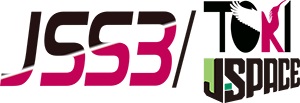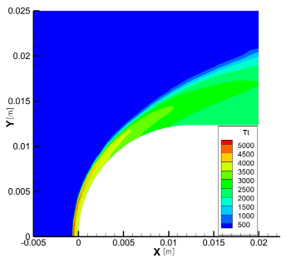Simultaneous multi-point spectroscopy in a simulated Mars atmospehre entry environment
JAXA Supercomputer System Annual Report February 2023-January 2024
Report Number: R23EACA62
Subject Category: JSS Inter-University Research
- Responsible Representative: Takaki Uwazumi, The University of Tokyo
- Contact Information: Takaki Uwazumi(takaki.uwazumi@gmail.com)
- Members: Kojiro Suzuki, Takaki Uwazumi
Abstract
For successful landing missions to Mars, precise prediction of the heating around the capsule during atmospheric entry is essential. Therefore, the aim of this study is to improve the prediction accuracy of radiation heating around a Mars-entry vehicle. The experimental estimation of the thermo-chemical conditions around a free-flight vehicle is conducted by making spectroscopic measurements around a capsule model injected at hypersonic velocity into a simulated Martian atmosphere using a light gas gun.
Reference URL
N/A
Reasons and benefits of using JAXA Supercomputer System
In order to evaluate uncertainties and dependence on nonequilibrium thermochemical models, configurations, and freestream conditions, supercomputer has been used to perform a large number of CFD runs by changing physical models, configurations, and flow conditions.
Achievements of the Year
Experimental research to estimate the thermochemical state of the non-equilibrium flow field around the capsule was also conducted. In this study, the spectrum was aimed to obtain from a free-flying object ejected into a simulated Martian atmosphere at hypersonic speed by a light gas gun. The JONATHAN code was used to calculate the thermochemical state around the capsule, and SPRADIAN was used to acquire expected spectrum based on those results. Observation conditions such as the observation area and wavelength band were then selected considering those calculations. As a result, the spectra from the area around the capsule, which was flying at a hypersonic speed of approximately 4 km/s, was successfully obtained. The temperature of the flow field was also obtained from spectrum fitting using SPRADIAN (Fig. 1).
Publications
– Oral Presentations
Proceedings of the Space Sciences and Technology Conference: 2023 Symposium on Flight Mechanics and Astrodynamics: 2023
Usage of JSS
Computational Information
- Process Parallelization Methods: MPI
- Thread Parallelization Methods: OpenMP
- Number of Processes: 1 – 10
- Elapsed Time per Case: 24 Hour(s)
JSS3 Resources Used
Fraction of Usage in Total Resources*1(%): 0.00
Details
Please refer to System Configuration of JSS3 for the system configuration and major specifications of JSS3.
| System Name | CPU Resources Used(Core x Hours) | Fraction of Usage*2(%) |
|---|---|---|
| TOKI-SORA | 1436.93 | 0.00 |
| TOKI-ST | 0.00 | 0.00 |
| TOKI-GP | 0.00 | 0.00 |
| TOKI-XM | 0.00 | 0.00 |
| TOKI-LM | 0.00 | 0.00 |
| TOKI-TST | 0.00 | 0.00 |
| TOKI-TGP | 0.00 | 0.00 |
| TOKI-TLM | 0.00 | 0.00 |
| File System Name | Storage Assigned(GiB) | Fraction of Usage*2(%) |
|---|---|---|
| /home | 0.00 | 0.00 |
| /data and /data2 | 0.00 | 0.00 |
| /ssd | 0.00 | 0.00 |
| Archiver Name | Storage Used(TiB) | Fraction of Usage*2(%) |
|---|---|---|
| J-SPACE | 0.00 | 0.00 |
*1: Fraction of Usage in Total Resources: Weighted average of three resource types (Computing, File System, and Archiver).
*2: Fraction of Usage:Percentage of usage relative to each resource used in one year.
ISV Software Licenses Used
| ISV Software Licenses Used(Hours) | Fraction of Usage*2(%) | |
|---|---|---|
| ISV Software Licenses(Total) | 0.00 | 0.00 |
*2: Fraction of Usage:Percentage of usage relative to each resource used in one year.
JAXA Supercomputer System Annual Report February 2023-January 2024



